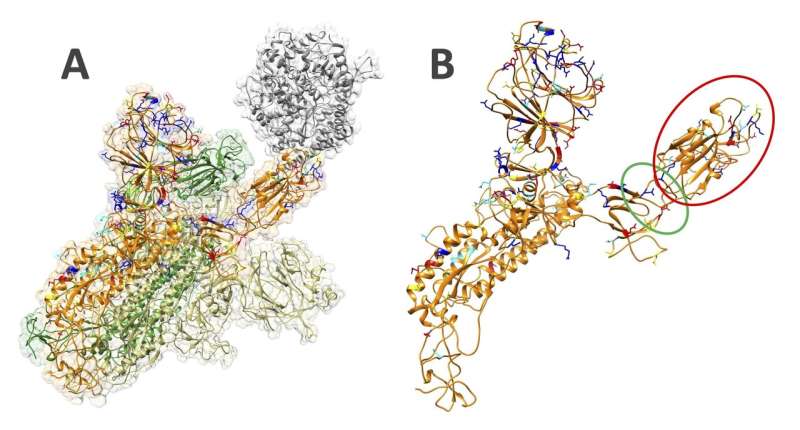
An effort led by Lin Li, Ph.D., assistant professor of physics at The University of Texas at El Paso, in collaboration with students and faculty from Howard University, has identified key variants that help explain the differences between the viruses that cause COVID-19 and Severe Acute Respiratory Syndrome (SARS).
A team comprised of researchers from UTEP and the historically Black research university in Washington, D.C., discovered valuable data in comparing the fundamental mechanisms of Severe Acute Respiratory Syndrome Coronavirus (SARS-CoV) and SARS-CoV-2—also known as COVID-19—to better understand how these viruses attack the human body. Their findings are published in an article titled “Spike Proteins of SARS-CoV and SARS-CoV-2 Utilize Different Mechanisms to Bind with Human ACE2” that recently appeared in the scientific journal Frontiers in Molecular Biosciences.
“We are very excited and interested in the timely work that Dr. Li and his collaborators have reported,” said Robert Kirken, Ph.D., dean of UTEP’s College of Science. “As the SARS-COV2 continues to evolve through its passage by infected humans, the rapid identification and assessment of these mutants using the research and testing approaches they have established will be critically important for the development of new vaccines and therapeutics.”
In comparing the viruses, researchers found that both are very similar in sequence and almost identical in structure. Using computational approaches, they were also able to identify mutations of SARS-CoV that make SARS-CoV-2 significantly more contagious and prone to cause serious infections.
“We found that because of mutations, the binding from SARS-CoV-2 to the human cell is much stronger compared with SARS-CoV,” Li said. “This might be one of the reasons why SARS-CoV-2 is spreading much faster and is difficult to control. SARS-CoV-2 also uses a much smarter strategy to attack the human cell than SARS-CoV. For example, when SARS-CoV infects or binds to the human cell, it uses several key residues or amino acids to do so, while SARS-CoV-2 uses more residues, making it more robust and easier to completely hijack the human cell.
“We identified the most important residues for SARS-CoV-2 to bind to the human cell. This type of data is key for drug development to cure or treat infections caused by these types of viruses. These fundamental rules and features can also be used for future disease control when perhaps 10 years from now, there’s a SARS-CoV-3 or 4.”
Researchers from both universities focused on examining one of the virus’ four main proteins, known as the spike protein, that initiates infection to the human body. They discovered that from SARS-CoV to SARS-CoV-2 there is an interesting change in mechanism of the binding domain of the spike protein.
“The binding domain needs to flip out so that it can bind to the human cell, but we found some strange mutations that happened. Like the hinge of a door, the binding domain may affect the flip mechanism of SARS-CoV-2. It may be more flexible, making it easier to bind to the human cell,” Li said.
The team included an interdisciplinary mix of undergraduate and graduate students, postdoctoral researchers and faculty from both UTEP and Howard University. Yixin Xie, a UTEP graduate student and research assistant, served as the paper’s first author, and led the calculation and analysis portions of the project while working closely with other UTEP and Howard University students remotely due to the pandemic.
Source: Read Full Article
